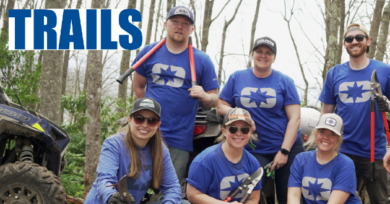SNOWMOBILE – National Park Service Asks for Yellowstone Comment, Again
The National Park Service is again taking public comment on snowmobile use in Yellowstone National Park.
On June 24, the Park Service announced the formal opening of a process to develop an environmental impact statement on the winter use of Yellowstone National Park, Grand Teton National Park and the John D. Rockefeller Jr. Memorial Parkway.
Issues to be examined include the effects of winter use on air quality and visibility, wildlife, natural soundscapes, employee and visitor health and safety, visitor experience and socioeconomics – all issues which have been previously studied.
The NPS says it will mull over four ideas:
– Setting various limits on the number of snowmobiles that may enter the parks.
– Guiding requirements, including allowing some unguided or non-commercially guided use.
– Allowing only mass-transit vehicles, such as snowcoaches.
– Leaving some stretches of road ungroomed for “experimental purposes” to study the use of groomed roads by bison.
The Park Service released its first study of Yellowstone snowmobiling in 1990.
An impact statement completed in 2000 called for phasing out snowmobile use over a three-year period. Snowmobile groups sued, and the government agreed to write a supplemental impact statement, which was completed in 2003. Under that document, snowmobiling was to continue, with strict regulation.
However, Federal Courts blocked both the 2000 and the 2003 plans, which led the NPS to prepare an environmental assessment effective through the winter of 2006-07.
Government statistics show snowmobile visits in Yellowstone dropped 25% last winter while snowcoach visits were up 14%. The Park Service says 24,049 snowmobiles entered Yellowstone last year, less that one-fifth than did in 1993, and 17,218 people entered on snowcoaches.
The average number of snowmobiles in January and February were 239 a day, said John Sacklin, a management assistant at Yellowstone. This is well below the 720-sled daily limit. Entries peaked at 420 in late February.
For more information, visit http://parkplanning.nps.gov.




